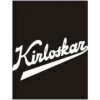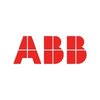Filter interviews by
Lohia Group CNC Setter & Operator Interview Questions and Answers
Lohia Group CNC Setter & Operator Interview Experiences
1 interview found
I applied via Approached by Company and was interviewed before Apr 2022. There was 1 interview round.
(3 Questions)
- Q1. 1.G code kya h? 2-M code kya h?
- Ans.
G code is a programming language used to control CNC machines. M code is used to activate auxiliary functions.
G code is used to control the movement of the machine, such as the speed, direction, and position of the tool.
M code is used to activate auxiliary functions, such as turning on/off coolant or spindle.
Both G and M codes are used in CNC programming to create a sequence of operations for the machine to follow.
Exam...
- Q2. G01 -FEED REVOLUTION,G28-HOME POSITION,
- Q3. M01-OPTINAL STOP M30 - PROGRAM STOP
Interview Preparation Tips
Top trending discussions






Interview questions from similar companies

Interview Questionnaire
1 Question
- Q1. How to sense flow transmitter to transmit signal to controller in selected range?
- Ans.
Flow transmitter senses flow and transmits signal to controller in selected range.
Use a flow transmitter that is capable of sensing flow and transmitting a signal.
Connect the flow transmitter to the controller using appropriate wiring and communication protocols.
Configure the flow transmitter to operate within the desired range.
Ensure proper calibration of the flow transmitter to accurately measure and transmit flow da...

(3 Questions)
- Q1. Engine basic questions
- Q2. Flywheel used in a engine
- Ans.
A flywheel is a mechanical device used in engines to store rotational energy and smooth out fluctuations in engine speed.
Flywheels are typically made of steel or aluminum and are attached to the engine's crankshaft.
They store energy during the power stroke and release it during the compression stroke to keep the engine running smoothly.
Flywheels are also used in hybrid vehicles to store energy from regenerative braking...
- Q3. Used of flywheel, crankcase, AVM pre filter
- Ans.
Flywheel, crankcase, and AVM pre filter are components used in internal combustion engines.
Flywheel stores rotational energy and helps maintain engine speed during power strokes.
Crankcase houses the crankshaft and other engine components.
AVM pre filter is used to remove larger particles from the air before it enters the engine.
These components are essential for the proper functioning of internal combustion engines.
Interview Preparation Tips

I applied via Campus Placement and was interviewed in Nov 2022. There were 3 interview rounds.

Machine design, CAD, Strength of Machines
(4 Questions)
- Q1. Various thermodynamic processes,
- Ans.
Thermodynamic processes are various ways in which energy can be transferred to or from a system.
Isothermal process: constant temperature
Adiabatic process: no heat transfer
Isobaric process: constant pressure
Isochoric process: constant volume
Examples: carnot cycle, rankine cycle, stirling cycle
- Q2. Factor of safety
- Ans.
Factor of safety is the ratio of the maximum stress a material can withstand to the actual stress it is subjected to.
It is used to ensure the safety and reliability of a design.
It is calculated by dividing the ultimate strength of a material by the maximum stress it is expected to experience.
A higher factor of safety indicates a more reliable design.
Factors of safety vary depending on the application and industry.
For e...
- Q3. What is entropy and real life example
- Ans.
Entropy is a measure of disorder or randomness in a system.
Entropy increases with time in a closed system
A messy room has higher entropy than a clean room
Melting of ice is an example of increase in entropy
Burning of wood is another example of increase in entropy
- Q4. What is Otto cycle
- Ans.
Otto cycle is a four-stroke combustion cycle used in spark-ignition engines.
It consists of four processes: intake, compression, power, and exhaust.
During the intake stroke, the fuel-air mixture is drawn into the cylinder.
In the compression stroke, the mixture is compressed to a high pressure and temperature.
The power stroke is where the spark plug ignites the mixture, causing it to expand and push the piston down.
Final...
Interview Preparation Tips

Design Engineer Interview Questions & Answers
Isgec Heavy Engineeringposted on 18 Jul 2024
(2 Questions)
- Q1. Basic Technical Questions
- Q2. What Skills do you have
Interview Preparation Tips

I appeared for an interview before Jun 2022.

(1 Question)
- Q1. 1 Tell me about yourself. 2 What do you know about ISGEC. 3 why do you leave last job. 4 why do you wantwork here. 5 How many years experience you have. 6 What is your previous salary. 7 what is your s...
(3 Questions)
- Q1. 1 what is Design. 2 Tell me about GD&T 3 what is joints and its type. 4 tell me about all standards use in design. 5 What is failure. 6 Tell me about properties of material . 7 What is vernier caliper ...
- Ans.
Design Engineer interview questions covering topics like design, GD&T, joints, standards, failure, material properties, vernier caliper, boiler, Bernoulli theorem, Pascal law, welding.
Design is the process of creating a solution to a problem or need.
GD&T (Geometric Dimensioning and Tolerancing) is a system for defining and communicating engineering tolerances.
Joints are connections between two or more parts, types incl...
- Q2. What is 3d software.
- Ans.
3D software is a type of computer program used to create, manipulate, and render three-dimensional images or animations.
Allows users to design and model objects in a three-dimensional space
Commonly used in industries such as architecture, engineering, animation, and gaming
Examples include AutoCAD, SolidWorks, Blender, and Maya
- Q3. What is structure and how use for our.
- Ans.
Structure in design engineering refers to the arrangement and organization of components to form a cohesive system.
Structure in design engineering involves organizing components in a way that ensures functionality and efficiency.
It helps in distributing loads and forces effectively throughout the system.
Structural analysis is used to ensure that the design can withstand various loads and stresses.
Examples include desig...
Skills evaluated in this interview

Design Engineer Interview Questions & Answers
EMERSON PROCESS MANAGEMENTposted on 12 Apr 2023
I applied via LinkedIn and was interviewed in Oct 2022. There were 4 interview rounds.

Questions from transducer digital electronics
(1 Question)
- Q1. Explain your project
(1 Question)
- Q1. I didn't selected for HR round

I applied via Campus Placement and was interviewed before Mar 2022. There were 4 interview rounds.

General Aptitude test of 50 questions, need to clear in 1 hour
(1 Question)
- Q1. Technical question in academics, questions on final project, Pump & fluid related questions
(1 Question)
- Q1. Regular HR questions
Interview Preparation Tips
- Fluid Mechanics
- Heat Transfer
- Centrifugal Pumps
- Materials

Design Engineer Interview Questions & Answers
Isgec Heavy Engineeringposted on 18 Aug 2023
I applied via Approached by Company and was interviewed in Feb 2024. There were 2 interview rounds.
(1 Question)
- Q1. I was selected for autocad plant 3d designer. Basic pump related questions were asked. Was asked to draw pump suction and discharge piping with its components.
- Ans. Tool test involved basic drafting activity.
Was asked for drafting support
Interview Preparation Tips
- 3D Modeling
- Piping Design
- Piping Layout
Try to learn from your experiences in the previous organization.
Try to learn to how to do the work the fastest way.
Your quick response is what appeals the most.
Best of luck👍

Design Engineer Interview Questions & Answers
Lakshmi Machine Worksposted on 16 May 2024
I applied via Walk-in
(1 Question)
- Q1. Engineering Basics
(1 Question)
- Q1. Technical questions related to the previous experience
Lohia Group Interview FAQs
Tell us how to improve this page.
Lohia Group Interviews By Designations
- Lohia Group Design Engineer Interview Questions
- Lohia Group Manager SCM Interview Questions
- Lohia Group Mechanical Designer Interview Questions
- Lohia Group Production Manager Interview Questions
- Lohia Group Manager Interview Questions
- Lohia Group Graduate Engineer Interview Questions
- Lohia Group Business Development Interview Questions
- Lohia Group Territory Sales Manager Interview Questions
- Show more
Interview Questions for Popular Designations
- CNC Setter Interview Questions
- CNC Programmer cum Setter Interview Questions
- CNC VMC Operator and Setter Interview Questions
- VMC Setter Interview Questions
- VMC Operator and Setter Interview Questions
- CNC Turning Operator and Setter Interview Questions
- VMC Programmer and Setter Interview Questions
- VMC Operator VMC Setter Interview Questions
- Show more
Lohia Group CNC Setter & Operator Interview Process
based on 1 interview
Interview experience
Interview Questions from Similar Companies
Fast track your campus placements
|
Engineer
84
salaries
| ₹2.4 L/yr - ₹7 L/yr |
|
Manager
78
salaries
| ₹4.5 L/yr - ₹14 L/yr |
|
Supervisor
43
salaries
| ₹1.3 L/yr - ₹4.5 L/yr |
|
Senior Engineer
38
salaries
| ₹3.1 L/yr - ₹10.8 L/yr |
|
Service Engineer
36
salaries
| ₹3.1 L/yr - ₹8.5 L/yr |

Thermax Limited

ABB

Isgec Heavy Engineering

Kirloskar Oil Engines
- Home >
- Interviews >
- Lohia Group Interview Questions >
- Lohia Group CNC Setter & Operator Interview Questions











